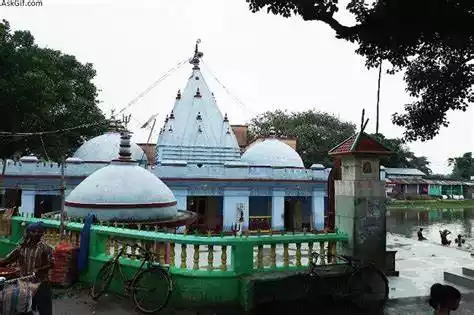Exploring Araria District: A Comprehensive Guide
Introduction
Welcome to our comprehensive guide on Araria District, a region brimming with rich culture, history, and natural beauty. Situated in the eastern part of Bihar, India, Araria District offers a captivating blend of demographics, cultural heritage, and picturesque landscapes.
Demography
Araria District boasts a diverse population comprising various ethnicities, religions, and linguistic groups. With a population of over 3 million people, it is one of the most populous districts in Bihar. The demographic makeup includes Hindus, Muslims, and a smaller percentage of other religious communities. The district is predominantly rural, with agriculture being the primary occupation of the majority of its inhabitants.
Culture
The cultural tapestry of Araria District is vibrant and colorful, reflecting its rich history and the amalgamation of various traditions. Festivals like Eid-ul-Fitr, Diwali, and Chhath Puja are celebrated with great fervor and enthusiasm, showcasing the harmony among different communities. Folk music and dance forms such as Jhijhiya, Jat-Jatin, and Sohar are integral parts of the local cultural landscape, captivating visitors with their rhythmic beats and graceful movements.
Geography
Nestled amidst the lush greenery of the Terai region, Araria District is blessed with abundant natural beauty. Its landscape is characterized by fertile plains, interspersed with rivers, rivulets, and small hills. The district is bordered by Nepal to the north, Kishanganj District to the east, Purnia District to the west, and Supaul District to the south. The majestic rivers Kosi and Mahananda flow through the region, providing sustenance to the fertile agricultural lands.
Cuisines
Araria District offers a delectable array of culinary delights that tantalize the taste buds of visitors. The cuisine reflects the local flavors and preferences, with dishes like litti-chokha, sattu paratha, and ghugni being popular choices. The use of aromatic spices and fresh ingredients lends a unique and authentic taste to the traditional dishes served in the region. Street food stalls and local eateries offer an opportunity to savor the authentic flavors of Araria District's culinary heritage.
History
The history of Araria District is replete with tales of valor, conquests, and cultural exchange. It traces its roots back to ancient times when it was part of the Magadha Empire. Over the centuries, it witnessed the rise and fall of various dynasties, including the Mauryas, Guptas, and Mughals, each leaving behind a distinct imprint on its cultural landscape. The district played a significant role in the Indian independence movement, with several freedom fighters hailing from this region.
Notable Personalities
Araria District has been home to many illustrious personalities who have made significant contributions to various fields. One such luminary is the renowned poet and author, Phanishwar Nath 'Renu'. Born in the village of Aurahi in Araria District, Renu's literary works, including the iconic novel "Maila Anchal," have earned him widespread acclaim and recognition. His writings vividly depict the socio-cultural milieu of rural Bihar, immortalizing the essence of life in the region.
Administration
The administrative setup of Araria District is structured to ensure effective governance and service delivery to its residents. The district is divided into multiple administrative units, including subdivisions, blocks, and panchayats, each headed by designated officials. The District Magistrate oversees the overall administration and implementation of government schemes and policies, working in tandem with various departments to address the needs of the populace.
Conclusion
In conclusion, Araria District emerges as a captivating destination, offering a harmonious blend of culture, history, and natural beauty. From its diverse demography to its rich cultural heritage and mouthwatering cuisines, the district has much to offer to visitors and residents alike. Whether exploring its scenic landscapes or delving into its vibrant traditions, Araria District promises an enriching and unforgettable experience for all who venture into its embrace.
